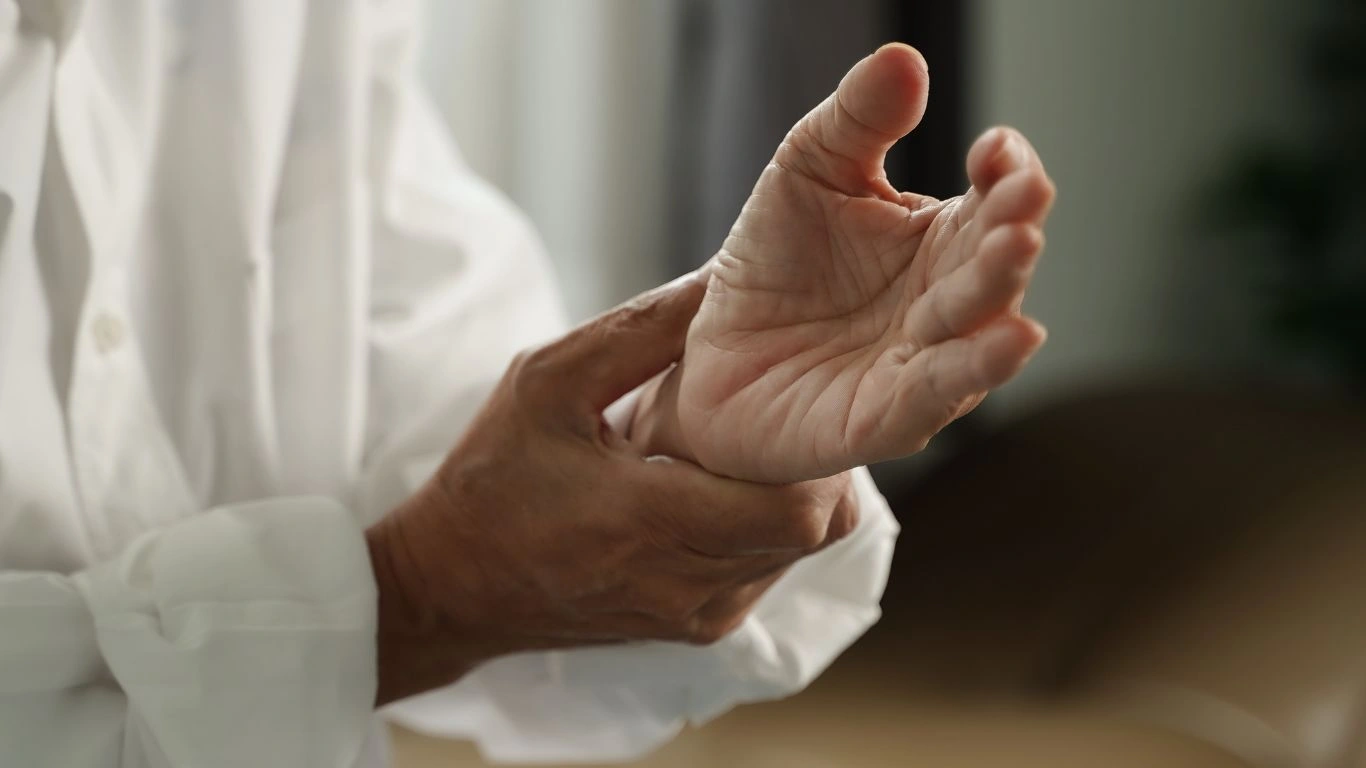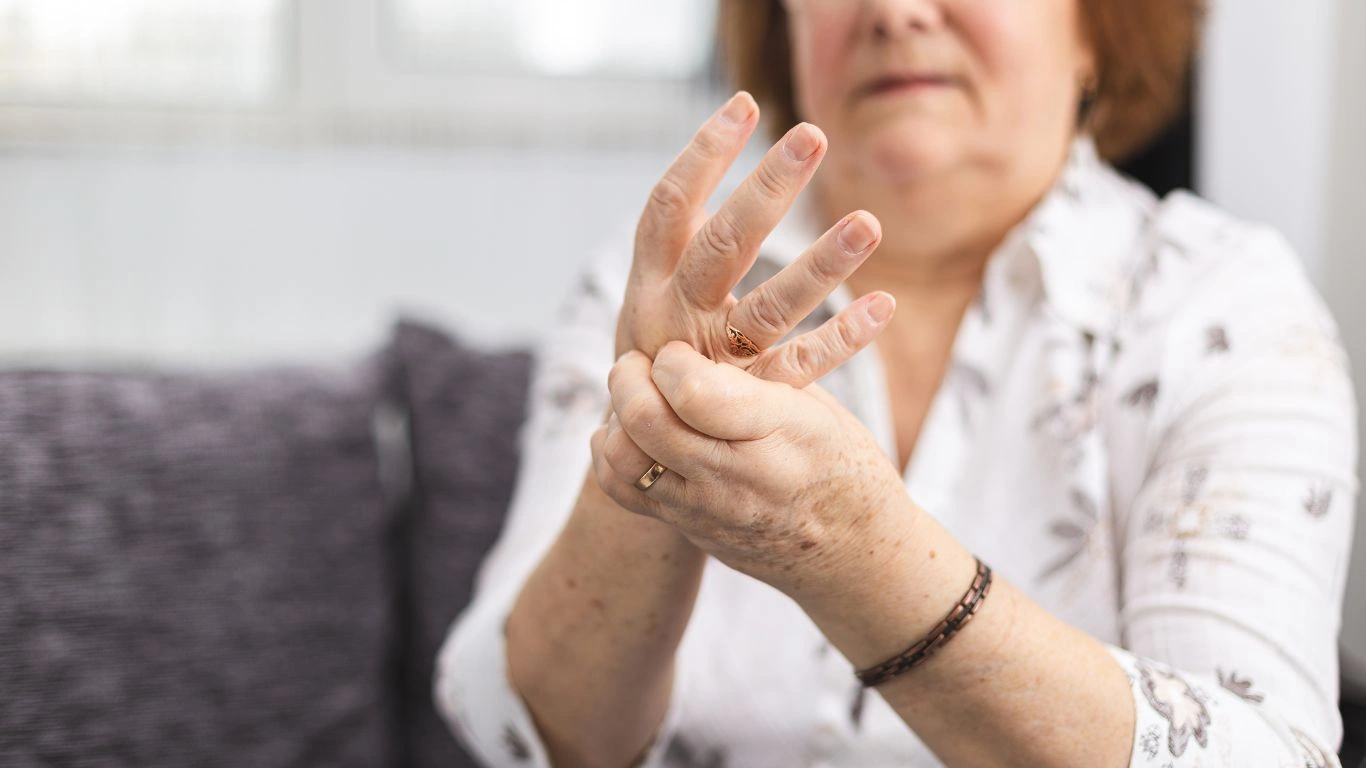Rheumatoid Arthritis and Its Impact on Joint Health
Rheumatoid arthritis (RA) is a condition that impacts millions of people around the world, and as someone who’s been a Rheumatology Nurse Practitioner for years, I’ve seen firsthand the toll this chronic autoimmune disease takes on individuals. One of the most significant and challenging aspects of RA is its effect on joint health. Whether it’s the hands, knees, or wrists, the pain and discomfort that come with the inflammation of these joints can drastically reduce a person’s quality of life. In this blog, we’ll dive deep into how rheumatoid arthritis affects joint health and why understanding its progression is crucial for managing the disease effectively.
What is Rheumatoid Arthritis?
Rheumatoid arthritis is not just a typical case of wear and tear on the joints – it’s an autoimmune disease where the body’s immune system mistakenly attacks its own tissues. The result? Inflammation in the joints, which can cause pain, swelling, stiffness, and even deformities if left untreated. Unlike osteoarthritis, which primarily occurs as a result of aging or injury, rheumatoid arthritis can affect people at any age, with the most common onset occurring in people between 30 and 60 years old.
In the case of RA, the immune system targets the synovium, the lining of the membranes surrounding the joints. This leads to painful swelling that can eventually result in joint damage. Over time, the joints can lose their function and become severely deformed. For many of my patients, RA starts in the smaller joints, such as those in the fingers and toes, before progressing to larger joints like the knees, hips, and shoulders.
How Rheumatoid Arthritis Affects Joint Health
Let’s talk about what really happens when rheumatoid arthritis takes hold of your joints. It’s not just about pain – it’s about inflammation that can alter the structure of the joint itself. The inflammatory process is what makes RA different from many other types of arthritis, and understanding this is key to understanding its impact on joint health.
The Role of Inflammation in Joint Damage
Inflammation in the joints causes a cascade of events that gradually damage the cartilage, bone, and other tissues inside the joint. This is why RA is often referred to as a “destructive” form of arthritis. In the early stages of the disease, the inflammation may come and go, but over time, the constant assault on the joints leads to permanent damage.
From my experience, one of the most heartbreaking aspects of treating patients with RA is seeing how quickly the disease can progress. Inflammation often goes unnoticed until significant damage has already occurred, especially when it’s in the early stages. It can affect not only the joints themselves but also the ligaments and tendons that surround them, leading to instability and deformities that can make basic tasks, like holding a cup or walking, feel impossible.

Commonly Affected Joints
Rheumatoid arthritis typically starts in the smaller joints, like the fingers, wrists, and toes, but it can affect virtually any joint in the body. As the disease progresses, the inflammation can spread to the larger joints, including the knees, hips, and shoulders. The symmetry of the condition is also a key feature – if one knee or wrist is affected, chances are the other will be too. This characteristic makes RA quite different from osteoarthritis, which tends to affect one joint at a time.
In my practice, I’ve often seen patients develop joint deformities in their hands. The fingers may become “crooked” or “cocked,” which can make even everyday activities such as typing, holding a steering wheel, or cooking difficult. The most challenging part? These deformities are often irreversible, so early detection and treatment are critical for preserving joint function.

The Long-Term Impact on Joint Mobility
Joint stiffness is another hallmark of RA. It’s common for patients to wake up in the morning feeling as though their joints are stiff and difficult to move, especially after a night of rest. This stiffness can last for hours, making it difficult to get the day started. Over time, the inflammation causes permanent damage to the cartilage and bones within the joint, which significantly affects mobility.
As someone who’s treated many individuals with advanced rheumatoid arthritis, I’ve seen how devastating it can be when someone loses the ability to move freely. Whether it’s difficulty standing from a sitting position or having to rely on assistive devices like walkers or canes, the loss of mobility can have a profound impact on a person’s independence and overall mental health. There’s also the risk of joint deformities that may cause the affected joints to become misaligned, making movement even harder.

Why Early Diagnosis Matters
Early diagnosis and treatment are essential to managing rheumatoid arthritis and its effects on joint health. The sooner RA is diagnosed, the more effectively we can slow down its progression. While there’s no cure for RA, modern treatments can help reduce inflammation, manage pain, and preserve joint function. This is why it’s so important for individuals to seek medical attention at the first sign of joint pain, stiffness, or swelling, particularly if these symptoms persist for more than a few weeks.
In my experience, the earlier a patient starts treatment, the better the chances are for a positive outcome. Medications like disease-modifying antirheumatic drugs (DMARDs) and biologics have transformed the way we manage RA, allowing many patients to live more comfortable lives with less joint damage. Physical therapy and lifestyle changes, such as regular exercise and diet adjustments, can also play a key role in protecting joint health.
Managing Rheumatoid Arthritis: Treatment Options for Joint Health
As we discussed in the first part of this article, rheumatoid arthritis (RA) can significantly impact joint health, leading to pain, stiffness, and deformities. But while there’s no cure for RA, the good news is that we have many effective treatment options that can help slow the disease’s progression and reduce its impact on joint health. From medications to lifestyle changes, it’s all about managing the disease and preserving joint function.
Medications for Managing RA
Medications are the cornerstone of rheumatoid arthritis treatment, and as someone who has worked closely with patients on their medication regimens, I can’t stress enough how important it is to follow a prescribed treatment plan. The right medications can reduce inflammation, prevent joint damage, and help manage pain. The earlier treatment begins, the better the outcome in terms of maintaining joint health.
There are several classes of medications used in the treatment of RA, and I’ll break them down for you here:
- Disease-Modifying Antirheumatic Drugs (DMARDs): These are the primary medications used to treat RA. They work by suppressing the immune system, which helps prevent further joint damage. Methotrexate is the most commonly prescribed DMARD, but there are others like sulfasalazine and leflunomide that can also be effective.
- Biologic DMARDs: If traditional DMARDs aren’t effective, biologics may be recommended. These drugs target specific parts of the immune system that drive inflammation in RA. Some common biologics include tumor necrosis factor (TNF) inhibitors, such as Humira or Enbrel, and interleukin inhibitors like Actemra.
- Corticosteroids: Corticosteroids, such as prednisone, are often used for short-term flare-ups of RA. While they can be very effective at reducing inflammation quickly, they come with a range of potential side effects, so they’re typically used sparingly.
- Nonsteroidal Anti-Inflammatory Drugs (NSAIDs): Over-the-counter medications like ibuprofen can help with pain and inflammation but won’t slow the progression of the disease. They are often used in conjunction with other medications to provide relief from symptoms.
From my experience, it’s not a one-size-fits-all approach, so finding the right medication can take time. Some people may respond well to methotrexate, while others may need biologics or a combination of treatments. The key is working closely with your healthcare provider to monitor progress and make adjustments when necessary.

Physical Therapy and Exercise
Another important component of managing rheumatoid arthritis is physical therapy and exercise. RA may cause joint stiffness and pain, making it difficult to move as freely as you’d like. That’s where a good physical therapist can make a world of difference. Physical therapy can help you maintain or even improve joint function and prevent further damage by strengthening the muscles surrounding your joints.
Exercising regularly, under the guidance of a physical therapist, can also help improve your joint mobility and reduce pain. Low-impact exercises, such as swimming or walking, are often recommended for people with RA. These exercises can keep your joints moving without putting too much strain on them. In fact, in my clinical practice, I’ve often seen patients who’ve stuck with a gentle exercise routine report fewer flare-ups and better overall joint health.
It’s easy to assume that rest is the best option when joints are feeling inflamed, but the opposite is often true. While it’s important to avoid overexerting yourself during a flare-up, light exercise can help reduce stiffness and improve circulation to the joints. Your physical therapist can guide you on which exercises will be the most beneficial, considering your level of discomfort.
Diet and Rheumatoid Arthritis: The Role of Nutrition
Another often overlooked aspect of managing rheumatoid arthritis is diet. Believe it or not, certain foods can actually help reduce inflammation in the body, while others can exacerbate the problem. I’ve seen how small dietary changes can make a significant difference in the lives of people with RA.
Inflammation is at the core of RA, so consuming anti-inflammatory foods can support the body in managing the disease. Omega-3 fatty acids, found in fish like salmon, mackerel, and sardines, are well-known for their anti-inflammatory properties. I often recommend that my patients with RA try to incorporate these kinds of fish into their diets at least a couple of times a week. Additionally, foods like leafy green vegetables, fruits, and nuts are great for their antioxidants and other anti-inflammatory compounds.
On the flip side, some foods can contribute to increased inflammation. Processed foods, those high in sugar or refined carbohydrates, can be inflammatory and should be limited in an RA diet. Red meat and dairy products also have the potential to cause inflammation in some people, so I encourage my patients to experiment with eliminating or reducing these foods from their diet to see if it helps with their symptoms.

Assistive Devices for Joint Protection
Managing joint health with rheumatoid arthritis isn’t just about medications or exercises – sometimes, you need a little help from assistive devices. These tools are designed to make daily tasks easier and less painful for individuals with joint damage. In my practice, I’ve seen many patients benefit from these devices, which can help protect joints from unnecessary strain and give people a better sense of independence.
Some common assistive devices for RA include:
- Splints: Wearing splints at night or during the day can help support joints that are weakened or deformed due to RA. They’re especially useful for the hands and wrists, where joint deformities tend to occur most often.
- Reachers and Grabbers: For people with limited mobility in their hands, these tools can be a lifesaver. They allow individuals to pick up objects from the floor or reach high shelves without straining their joints.
- Ergonomic Tools: Special tools, such as cushioned grips or jar openers, can reduce the pressure on the hands and wrists during tasks like cooking or cleaning. These devices are simple but can make a huge difference in terms of comfort and ease.
Assistive devices aren’t just about comfort – they can help prevent further joint damage by reducing the strain on affected joints. It’s all part of a comprehensive approach to maintaining joint health over time.

Living with Rheumatoid Arthritis: Coping Strategies for Joint Health
Living with rheumatoid arthritis (RA) presents many challenges, especially when it comes to managing joint health. While the physical toll is significant, the emotional and mental aspects can also be overwhelming. From personal experience as a Rheumatology Nurse Practitioner, I know how important it is to address these aspects of the disease. Coping with RA is not just about treating the physical symptoms; it’s about learning how to live with a chronic condition that impacts daily life. In this section, I want to discuss some coping strategies that can help individuals with RA maintain a positive outlook and improve their quality of life.
The Mental and Emotional Toll of RA
One thing that often gets overlooked when talking about rheumatoid arthritis is the mental and emotional toll it takes on a person. Chronic pain, joint stiffness, and the unpredictability of flare-ups can lead to feelings of frustration, anxiety, and depression. In my clinical practice, I’ve seen how patients struggle with these emotions, especially when they feel like they are losing their independence or when joint damage limits their ability to participate in activities they once enjoyed.
It’s completely normal to feel down at times, but I always encourage my patients to talk openly about these emotions. Acknowledging the mental strain of RA is just as important as addressing the physical symptoms. Support groups, therapy, and counseling are invaluable resources for many people coping with the emotional challenges of RA. Some patients find it helpful to join an online RA community where they can connect with others who understand their struggles. Talking to someone who “gets it” can be an enormous relief.
Stress Management Techniques
Managing stress is another critical aspect of living with RA. Stress can actually exacerbate RA symptoms by triggering flare-ups and increasing inflammation. Learning to cope with stress can help manage both the mental and physical symptoms of RA. In my experience, many patients find that incorporating relaxation techniques into their daily routine makes a significant difference.
Some effective stress management techniques include:
- Mindfulness and Meditation: These practices are wonderful for calming the mind and reducing stress. Mindfulness allows you to focus on the present moment, while meditation helps clear your mind and relax your body.
- Deep Breathing Exercises: Deep breathing can help reduce the body’s stress response and relax tense muscles, which can alleviate some of the discomfort caused by RA.
- Yoga and Tai Chi: These gentle exercises combine movement with breath control and relaxation, making them excellent for improving flexibility and reducing stress. Many people with RA find that yoga is a great way to relieve stiffness and improve joint mobility.
These stress-reduction techniques can help people with RA feel more in control of their bodies and their disease, improving their overall sense of well-being.

Alternative Therapies and Their Role in Joint Health
While traditional medical treatments like DMARDs and biologics are essential in managing rheumatoid arthritis, many people also turn to alternative therapies to help alleviate symptoms and improve joint health. As a nurse practitioner, I always encourage a holistic approach to treatment, which includes exploring complementary therapies that can be used alongside conventional medications.
Acupuncture
Acupuncture is one alternative therapy that has gained popularity for its potential to relieve pain and reduce inflammation. In acupuncture, fine needles are inserted at specific points in the body, which is thought to stimulate the body’s natural healing mechanisms. While research on acupuncture’s effectiveness for RA is still ongoing, many of my patients have reported experiencing a reduction in pain and stiffness after treatment.
Herbal Remedies
There are also several herbal remedies that people with RA turn to for pain relief. Some herbs, such as turmeric and ginger, have well-documented anti-inflammatory properties. Turmeric contains curcumin, a compound that has been shown to reduce inflammation in the body, making it a popular supplement for individuals with RA. Ginger is another natural anti-inflammatory that can be consumed in tea or as a supplement.
However, I always remind my patients to consult their healthcare provider before starting any herbal treatments, as they can interact with prescription medications. It’s crucial to ensure that any complementary therapies are safe and do not interfere with the medications being used to manage RA.
Massage Therapy
Massage therapy is another popular alternative treatment that can help alleviate joint stiffness and pain associated with RA. Gentle massage can help improve circulation, reduce muscle tension, and promote relaxation. In my experience, many patients find that regular massage therapy sessions help improve their range of motion and provide relief from the daily discomfort of RA.
While these alternative therapies are not a replacement for traditional medical treatments, they can be a valuable part of a comprehensive approach to managing rheumatoid arthritis. The key is to find what works best for you and always work with your healthcare provider to ensure a safe and effective treatment plan.
Looking Ahead: The Future of Rheumatoid Arthritis Treatment
When it comes to the future of rheumatoid arthritis treatment, the outlook is promising. Research into new therapies is ongoing, and we are continuously learning more about the underlying mechanisms of RA, which may lead to more targeted and personalized treatments in the years to come. Advances in biologic medications, gene therapy, and even stem cell treatments are areas of intense research, all of which could change the way we approach the management of RA in the future.
In my practice, I’m already seeing the benefits of newer biologic medications that target specific components of the immune system. These medications have revolutionized the way we treat RA and have improved the lives of countless patients. If you’re living with rheumatoid arthritis, it’s important to stay informed about the latest treatment options and speak with your doctor about what’s available to you.
Although RA can be a challenging condition to manage, the advancements in treatment and the growing awareness of the disease mean that people with RA can look forward to a future with better joint health and a higher quality of life.

References
- Health Usias
- https://www.mayoclinic.org/diseases-conditions/rheumatoid-arthritis/symptoms-causes/syc-20353648
Disclaimer: The information in this article is intended for informational purposes only and should not be considered medical advice. Always consult with your healthcare provider before making any changes to your treatment plan or lifestyle. The author is a licensed healthcare professional, but the opinions expressed here are based on personal experience and should not replace professional medical guidance.

Tarra Nugroho is a dedicated Nurse Practitioner with a strong foundation in family and preventive care. She brings both compassion and clinical expertise to her practice, focusing on patient-centered care and health education. As a contributor to Healthusias.com, Tarra translates medical knowledge into clear, empowering articles on topics like women’s health, chronic disease management, and lifestyle medicine. Her mission is simple: help people feel seen, heard, and informed—both in the clinic and through the content she creates. When she’s not caring for patients, Tarra enjoys weekend hikes, plant-based cooking, and curling up with a good health podcast.






